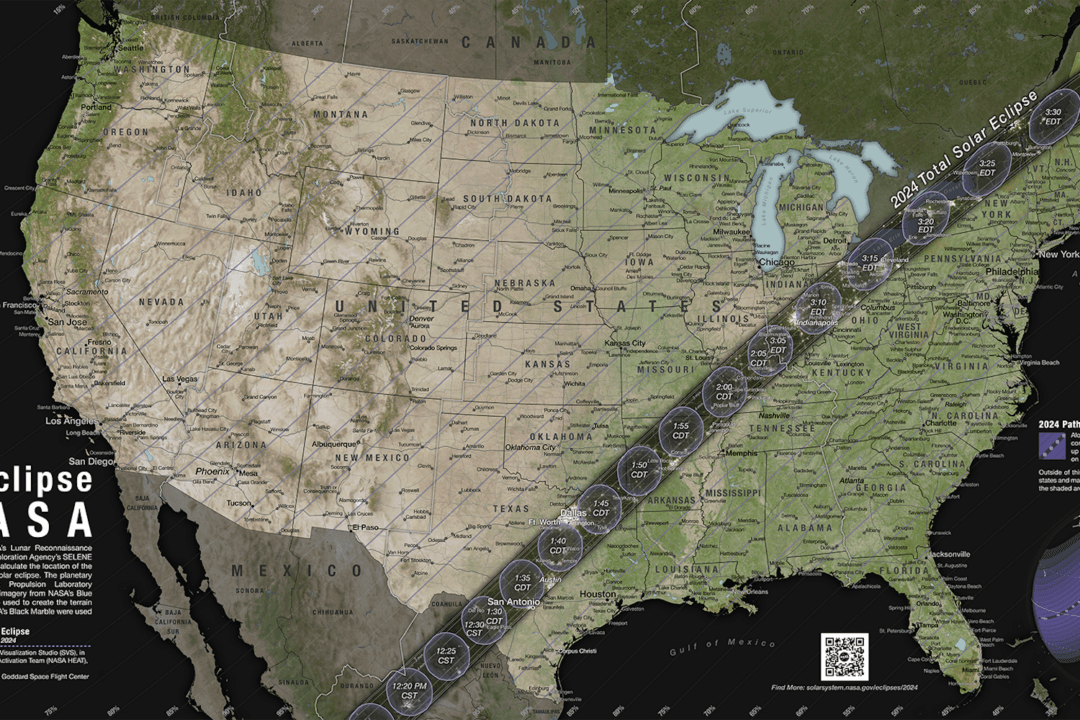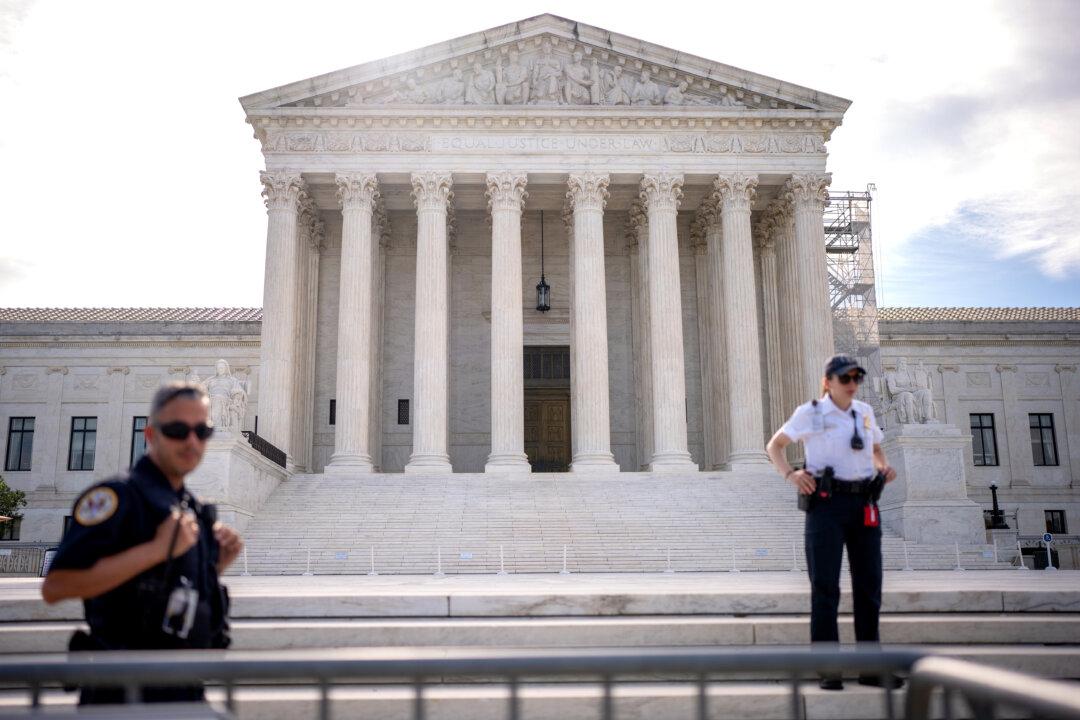Ohio Gov. Mike DeWine on Friday said that the state’s emergency operations center will be activated starting Sunday ahead of the total solar eclipse, which will be visible in much of the United States on Monday, April 8.
The governor said in a news conference that as many as 500,000 people might be coming to Ohio to view the eclipse, as portions of the state are within its “path of totality” and will get the best view.
“There is no better place to experience the eclipse than in Ohio, the Birthplace of Aviation and the heart of aerospace,” Mr. DeWine said. “While we are confident that our local communities have fully prepared for the influx of spectators, having our Emergency Operations Center at the ready will allow us to immediately respond if any unexpected needs arise.”
He said the Ohio State Highway Patrol, the Emergency Management Agency, the Adjutant General’s Department, the Fire Marshal’s Office, the Environmental Protection Agency staff members as well as the agencies’ staff will report to the operations center in the capita, Columbus, starting on Sunday.
The governor added that he asked state Adjutant General John Harris to be on standby, saying that there will be “come training exercises” over the coming weekend, and that officials will be “prepared and will monitor the situation.”
“And if we need the Guard to come in, we certainly will be able to do that,” Mr. DeWine said, referring to the National Guard.
“Right after the eclipse is probably not the best time to get in your car and try to get somewhere,” Mr. DeWine also said. “It will settle out over a long period of time. Some people have made plans to spend the night, some people have booked into the state park … some people are doing the same thing in hotels.”
The governor told a local ABC affiliate station that the emergency operations center will be open as long as needed depending on crowds and traffic after the eclipse ends.
Emergencies Declared Elsewhere
In Indiana, Gov. Eric Holcomb last week declared a statewide emergency due to a large influx of visitors to his state to view the total solar eclipse.“The massive number of people viewing this event in our state may well stress and/or interfere with first responder and public safety communications and emergency response systems such that a technological or other emergency may occur,” Mr. Holcomb said in a statement last week, noting that the declaration was issued as a precaution to bring in emergency resources from other states.
Like Ohio, Indiana lies within the eclipse’s path of totality, including the state’s largest city and capital, Indianapolis.
“It is of primary importance to the state of Indiana to be prepared to protect the health, safety and welfare of the public during this event and to be prepared to swiftly and effectively respond to any emergency that may arise,” the governor’s order said.
Meanwhile, multiple counties in New York, another state that will have good visibility of the eclipse, have declared emergencies ahead of the astronomical event. Those counties are located in the state’s north, near Lake Ontario.
In New York, Gov. Kathy Hochul warned travelers in the state to expect high amounts of traffic as several eclipse-viewing events will be held. She said that lane closures and construction will be halted ahead of the astronomical event.
Across Lake Ontario, the Niagara Falls region in Ontario, Canada, declared an emergency last week due to an anticipated influx of tourists.
Eclipse Path May Shift, Expert Says
A scientist with NASA said this week that the official map showing the eclipse’s path of totality, which heads diagonally across much of the central and eastern United States and runs from Texas to Maine, may not be entirely accurate.He added that “this difference would only affect cities on the very edge of the path of totality, where blanket predictions are difficult, regardless. A few city blocks one way or the other could mean 20, 10, or zero seconds of totality.”







